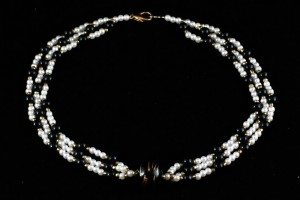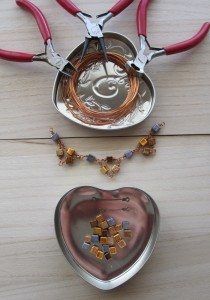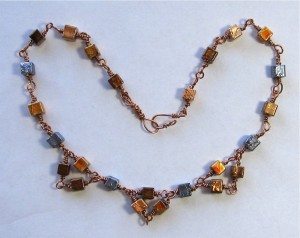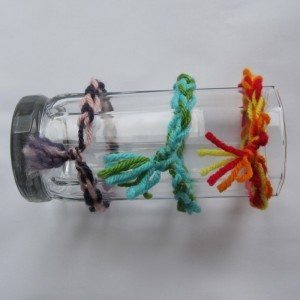
The magic chain stitch in embroidery is structured like the standard chain stitch, but the links alternate colors. To make it, you load your needle with the full number of strands of each of two colors, and then when catching the thread for each loop you catch only one color at a time. It has a high fanciness-to-difficulty ratio.
I’m sure I’m not the first to adapt the magic chain stitch to crochet chains. Make a slip knot with two strands, and then chain alternately with each color. It will probably end up looser than your usual chain; the samples below were both made with an H hook (5 mm). It looks pretty neat:
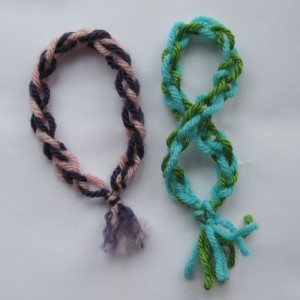
After chaining the last link, bring the opposite color through it and tie the strands together in an overhand knot (or just tie the beginning and end together all at once).
I tried it with three colors, rotating among them, but a loose strand stretching across two links was too messy. Instead, I bounced up to a K hook (6.5 mm) and used two strands at a time, rotating which was left out. That worked better, but I think I prefer the two color version.
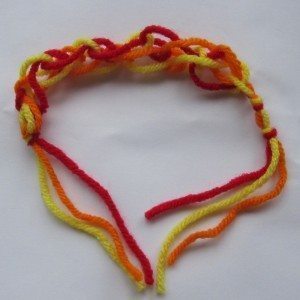
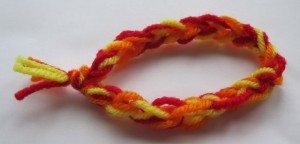
You’ll notice I have three different-looking tassels. The red-orange-yellow one is just the yarn ends tied together. For the green-blue one, I cut two additional strands of each color and tied them on after tying the ends together, to fatten up the tassel. The pink-purple tassel was combed out with a large pin and then trimmed.
These would make great lanyards, or a summer project to introduce kids to crochet!
